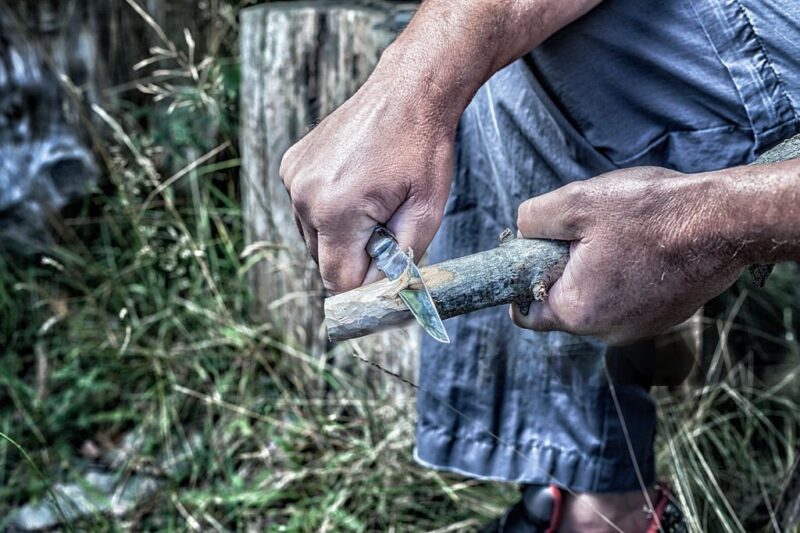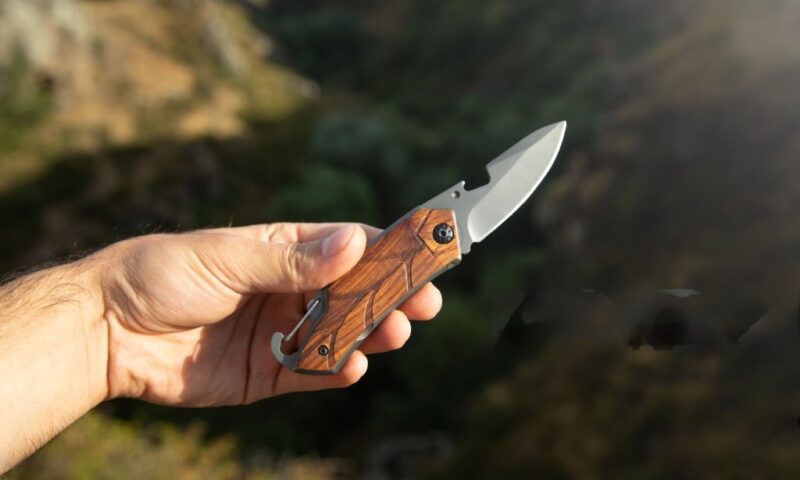Whittling, a timeless woodcarving craft, is both an art and a relaxing pastime. Whether shaping intricate designs or crafting wood-carved pieces, having the right whittling knife is essential. Choosing one can be overwhelming for beginners, but this guide will help you find the perfect fit. Explore our grain wood furniture collection to see how expert craftsmanship brings wood to life.
Understanding Whittling Knives

Let’s first examine what makes a whittling knife unique from other carving instruments before getting into the technicalities of selecting one:
- Purpose: Whittling knives are made especially for carving wood into complex patterns and shapes. Usually, they contain a single, sharp blade that makes for accurate detailing and cutting.
- Blade Design: Whittling knives are available with straight, curved, and hooked blades, among other blade forms. Every design has a distinct function and accommodates various carving methods.
- Comfort of the Handle: Because whittling requires hours of precise cutting, the ergonomics and comfort of the handle are very important. Better control over the knife is made possible by a comfortable grip, which also lessens hand fatigue.
- Blade Material: The sharpness, longevity, and maintenance needs of a blade are determined by the quality of the blade material. Carbon steel, stainless steel, and high-carbon stainless steel are common materials for blades.
- Size and Weight: Whittling knives are available in a variety of sizes and weights to suit a range of hand sizes and carving styles. To be precise and agile, size and weight must be balanced.
With our foundational knowledge about whittling knives now established, let’s move on to the process of selecting the best one for novices.
Step 1: Determine Your Whittling Projects
Prior to choosing a whittling knife, you should think about the kinds of tasks you want to work on. Your choice of knife will depend on whether you want to carve enormous sculptures, little figures, or intricate motifs.
- Small Projects: Use a knife with a thin, pointed blade for fine detailing if your main interest is carving tiny, fragile items like jewelry or figurines.
- Medium Items: A knife with a somewhat broader blade and a straight or curved edge works well for shaping and refining medium-sized items, such as animal carvings or spoons.
- Big Projects: For effective material removal and shaping, think about using a knife with a longer blade and solid construction if you intend to work on bigger projects like furniture or sculptures.
Step 2: Choose the Right Blade Design
How much detail you can accomplish and the carving techniques you can use are mostly determined by the design of the blade. The following are some popular blade designs and the appropriate uses for them:
- Straight Blade: Perfect for shaping flat surfaces and cutting accurately and straight. Because of its simplicity and adaptability, it’s appropriate for novices.
- Curved Blade: Ideal for creating complex curves, concave shapes, and rounded edges. improves flexibility and control for sculpting organic shapes.
- Hooked Blade: Ideal for cutting out scoops, hollows, and small features like mouths and eyes. ideal for giving your carvings more dimension and depth.
Step 3: Consider Handle Comfort and Ergonomics
For prolonged carving sessions, the ergonomics and comfort of the handle are essential since they have a direct bearing on hand fatigue and knife control. Take into account the following elements while selecting a whittling knife:
- Material for Handle: Seek for handles composed of sturdy, cozy materials like rubber, plastic, or wood. Steer clear of handles that are very rough or slippery since these might lead to blisters and pain.
- Grip Design: Choose a knife that fits nicely in your hand and offers a firm grasp if it has a textured or curved grip. Knives with extremely thin or bulky handles should be avoided as they might cause hand cramping and impair dexterity.
- Weight Distribution: For the best control and mobility, choose a knife with a balanced weight distribution between the handle and blade. Wood carving knife that feel imbalanced or too heavy should be avoided as they might cause wrist and hand discomfort.
Step 4: Assess Blade Material and Sharpness
A whittling knife’s performance and lifespan are significantly impacted by the material quality and sharpness of the blade. Take into account the following factors while assessing blade material:
- Sharpness: Choose knives with blades that are razor sharp and hold their edge even after frequent use. Sharp cuts and accurate detailing are guaranteed with a razor-sharp blade, which also prevents ripping or splintering.
- Durability: Look for blades composed of premium materials, such as high-carbon stainless steel or carbon steel, which have exceptional corrosion resistance and edge retention. Steer clear of blades that rust or dull readily because they need to be sharpened and maintained frequently.
- Maintenance: Take into account the material of the blade and its requirements; certain types may need to be sharpened or oiled more frequently to avoid rust and corrosion. Select a blade material that is long-lasting and requires little maintenance.
Step 5: Find the Right Size and Weight
The whittling knife’s weight and size greatly influence how controllable, nimble, and appropriate it is for a variety of hand sizes. Think about the following when choosing the weight and size of your knife:
- Blade Length: Select a length of blade that will work well for your projects’ scale and enable effective material removal and detailing. While shorter blades provide more control and precision for more precise work, longer blades are better suited for larger jobs.
- Overall Size: Make sure the knife fits properly in your hand and permits a natural carving motion by taking into account the knife’s overall size, which includes the handle and blade. Knives that feel overly large or unmanageable should be avoided since they can impair your accuracy and control.
- Weight: Be mindful of the knife’s weight, since too much weight can cause hand fatigue and impair control during prolonged carving sessions. Select a knife whose weight permits smooth movement and accuracy and that feels well-balanced and pleasant in your hand.
Final Words


